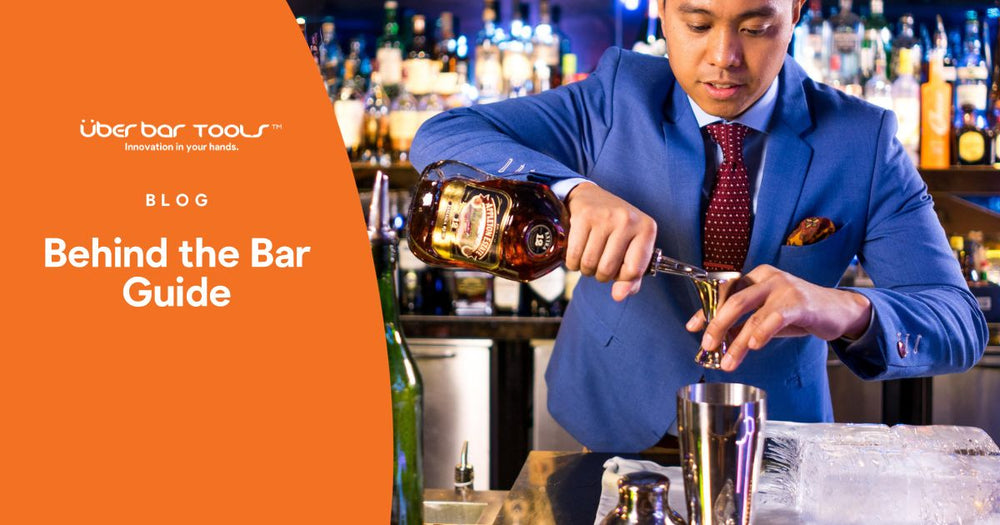
Running a bar or pub can be challenging especially with rising costs. It becomes crucial to adopt a savings mentality by implementing effective cost-saving measures.
In this blog, we'll explore six important steps to help optimize operations, minimise unnecessary expenses, and boost profitability.
1. Review Pouring and Measuring Tools
Let's start by focusing on an area with significant savings potential—your pouring and measuring tools. Surprisingly, up to 20% of all liquor served can be wasted due to improper pouring tools, techniques or inaccurate measurements. Addressing this issue can significantly reduce costs.
Thankfully, there’s a cost effective solution to reduce or stop spirit loss. The Perfect Pour System is a proven combination of innovative pourers and jiggers designed to reduce liquor waste. Watch how it works here.
2. Continuously Inspect What You Inspect
Regular inspections are key to keeping bar operations running smoothly. Inspecting every aspect of your bar from operations to inventory and equipment is the best way to catch expensive problems early. Remember, a proactive approach will save time and money in the long run.
3. Inventory Everything Behind the Bar
Taking inventory behind the bar is crucial for any establishment that wants to maintain control over their stock, prevent losses, and ensure smooth operations. Here's a checklist to guide you:
Liquor
| Spirits | Categorize and list all spirits by type (vodka, gin, whiskey, etc.) and brand. Include bottle size, remaining volume, and par level. |
| Liqueurs | List all liqueurs by type (fruit, cream, herbal, etc.) and brand, noting bottle size, volume, and par level. |
| Wine | Create sections for red, white, and sparkling wines. List each bottle by type, varietal, vintage, producer, bottle size, volume, and par level. |
| Beer | Separate your beer inventory into draft and bottled. List draft beers by name, brewery, keg size, remaining volume, and par level. For bottled beers, list by style, brand, bottle size, quantity, and par level. |
Non-Alcoholic Beverages
| Softdrinks | List all sodas, tonics, juices, and mixers by brand, size, quantity, and par level. Note if they're regular or diet. |
| Water | Include bottled water, sparkling water, and flavored water. Note quantity, size, and par level. |
| Coffee and tea | List coffee beans, tea bags, syrups, and milk options. Indicate quantity, size, and par level. |
Bar supplies
| Garnishes | List fruits, herbs, vegetables, olives, and other garnishes. Note quantity, freshness, and par level. |
| Ice | Estimate the amount of ice available and your par level for different ice types (cubes, crushed, spheres). |
| Syrups and bitters | List all syrups (simple syrup, grenadine, etc.) and bitters by type, brand, size, volume, and par level. |
| Bar tools | Count and note the condition of all pourers, shakers, strainers, jiggers, stirrers, muddlers, ice tools, etc. |
To stay on top, implement a robust inventory management system that tracks all usage and identifies discrepancies. Remember, a well-organized bar is a happy bar!
4. Review Standard Operating Procedures
In a post-COVID world, it's essential to revisit your standard operating procedures (SOPs). Evaluate processes for efficiency and effectiveness, and align bars with current trading and work conditions.
Optimizing SOPs allows bars to streamline operations, reduce wastage, enhance overall productivity which is a great start to maximize the guest experience.
5. Introduce Weekly Compliance Testing
Meeting customer expectations and industry standards is crucial for the success of any bar or pub. To ensure consistent delivery of high-quality products and services, consider implementing weekly compliance testing.
For example, bar owners can conduct bartender pour testing to maintain accuracy and consistency in drinks served. Consistency is key to customer satisfaction and long-term profitability.
6. Regularly Knowledge Test the Bar Team
A knowledgeable and skilled bar team plays a vital role in providing excellent customer experiences. Keeping the team sharp and up-to-date is best achieved with regular knowledge and training.
Conclusion
Implementing these key steps and embracing a savings mentality will surely make a big difference to the bottom line. Furthermore, continuous improvement is key, so regularly revisit these steps and adapt your approach as your business evolves.

